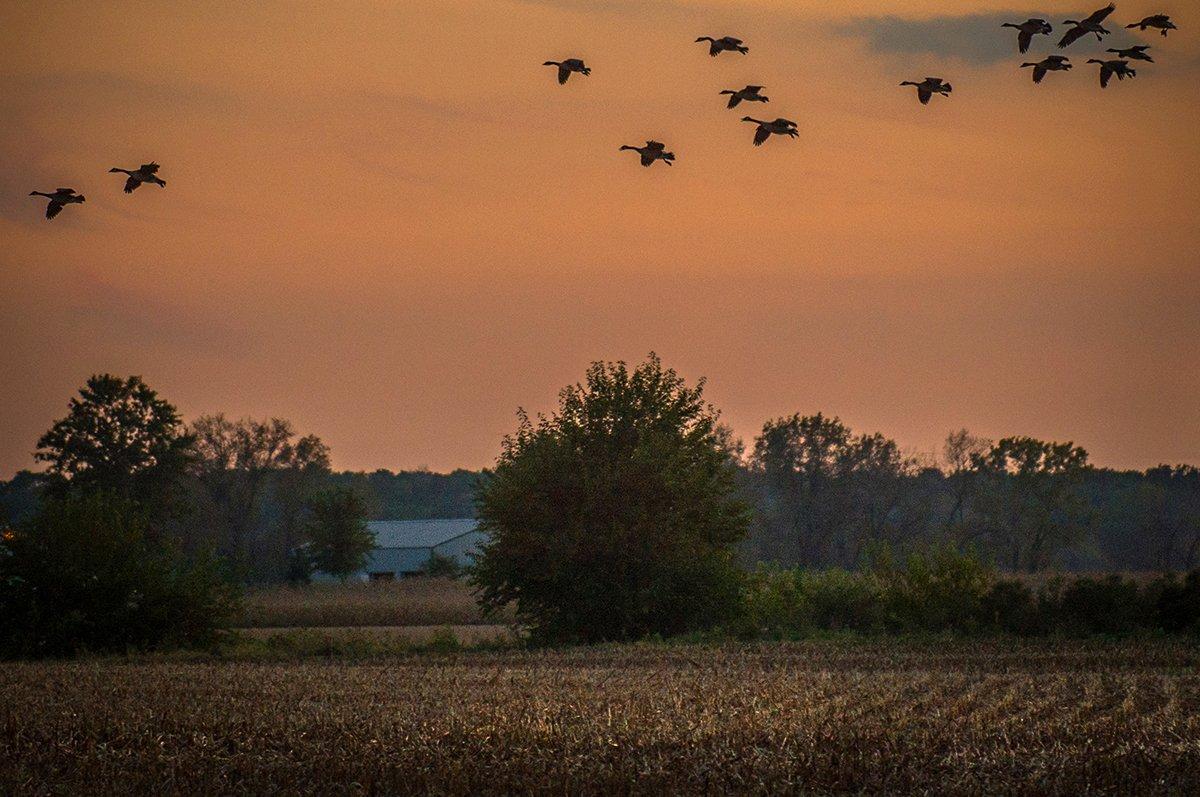Waterfowl Feed at Night Far More Often Than We Realize
Almost giggling in my field blind, I readied my calls and made sure I had extra shells at hand. We'd set the trap so perfectly that success was assured.
Conditions were perfect. A cool front was approaching from the west, and a stiff breeze rocked the corn stubble in front of us. The sun was sinking low behind our backs, and a small lake to our south was filling up with honkers, mallards and wood ducks. Soon, the birds would lift off to seek the abundant waste corn in our field.
And then the moon began to rise.
Yeah, about that … I'd forgotten it was a full moon. For the next 45 minutes, I sat in a funk while the sun set and our kill box remained almost devoid of waterfowl.
Full moon, clear skies, warm weather and pressured birds, I thought. They won't feed till after dark.
For once, I was spot on. When shooting hours expired, my buddy and I drove our trucks into the field to pick up our gear. And we could not stop ducks from dive-bombing the field and landing just 75 yards away. The geese would surely follow. It hammered home another lesson in the weird, wonderful world of waterfowl: When conditions are right, they'll feed at night.
Years ago, I thought that idea was hogwash. But then a buddy told me how he'd arrived at a hot goose feed one moonlit morning and flushed hundreds of birds out of the alfalfa. Other folks related similar experiences.
Science backs it up. In Ducks After Dark, Dale Humburg, chief biologist for Ducks Unlimited, wrote: While there are no absolutes regarding the daily activities of waterfowl, research has revealed a variety of nocturnal feeding behaviors in ducks. Diving ducks on the Great Lakes, for example, take flight at dusk from open-water roosts and move to shallower near-shore areas to feed during the night. Mottled ducks spend more time feeding at night than during the day and move from deeper daytime habitats to shallower waters to feed at night.
Likewise, Humburg wrote, Canada geese in the East and some parts of the Mississippi Flyway commonly feed at night. Further, pintails in Louisiana and southern Texas feed at night in flooded rice fields and spend much of the day loafing at rest areas, and gadwalls in Louisiana feed and rest at night more than during daylight, primarily to avoid avian predators. In addition, coastal black ducks time night feeding to coincide with low tide, when food availability is greatest.
What waterfowl do at night is often a direct result of what happens during the day, Humburg wrote. Ducks and geese often respond to changing habitat conditions and disturbance by altering their behavior, especially their feeding activities, from day to night. For example, in areas with heavy hunting pressure, waterfowl often congregate in no-hunting zones during the day and then fly out to feed during the night before returning to rest areas before dawn.
Which, I'm guessing, is precisely what occurred at my can't-miss goose field. And I'm convinced bluebills on a large lake I hunt often have adapted their behavior the past two seasons to feed mainly at night.
What does this mean for duck hunters? Not much, I guess, as we can't hunt in the dark. If anything, I suppose it's another reason to scout hard to find relatively unpressured ducks and geese that keep typical daytime feeding patterns. Not every bird in the area will feed exclusively after legal shooting hours.
Which brings me back to the field. Actually, one mallard worked our spread like a champ and offered me a chance at some small redemption. I emptied my gun, whiffing every time.
Some things never change — full moon or not.
Click here for more Realtree waterfowl hunting content. And check us out on Facebook.








